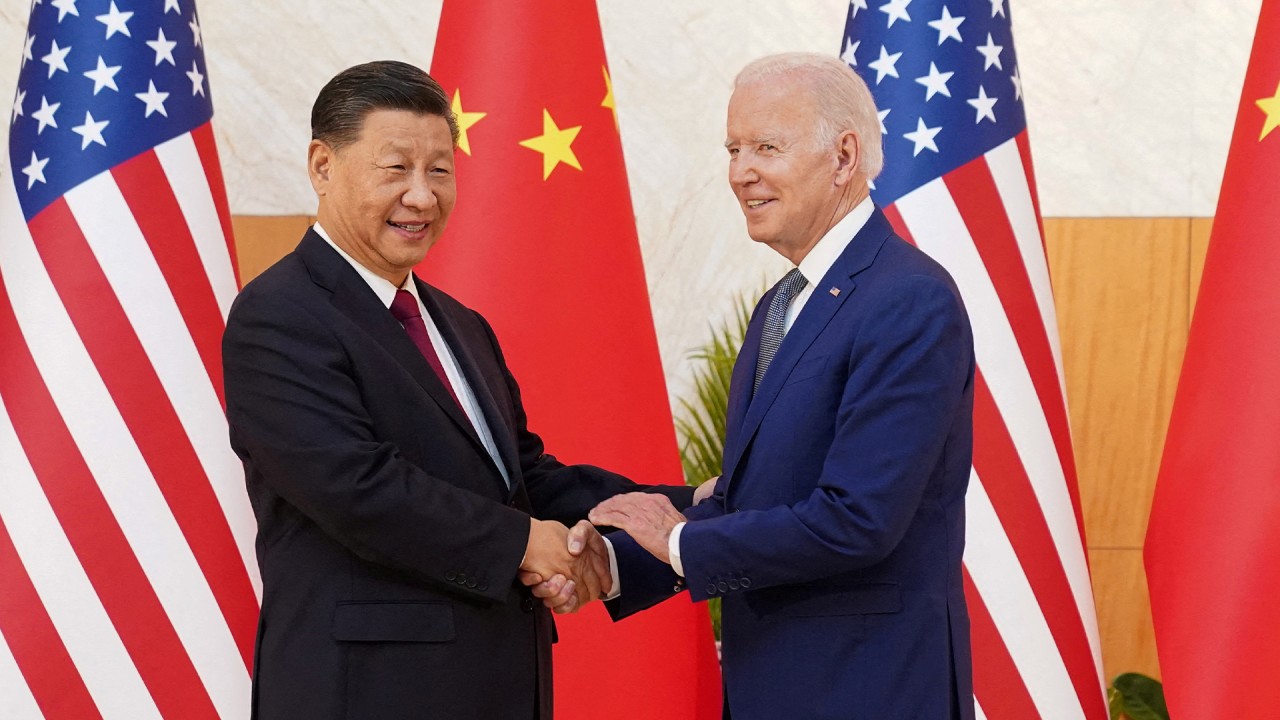
The US, China and Asean: there has been more talk than progress
- Washington and Beijing didn’t agree on anything substantive when Biden met Xi in Bali, except to continue to talk
- Meanwhile, there has been little progress on a South China Sea code of conduct – one of the loose ends that must be tied up for the sake of stability
It appears Biden got an earful from Xi, especially on the question of Taiwan. According to China’s foreign ministry, Xi “stressed that the Taiwan question is at the very core of China’s core interests, the bedrock of the political foundation of China-US relations, and the first red line that must not be crossed in China-US relations”.
Xi also declared that China seeks neither to change the existing international order nor to interfere in the US’ internal affairs – a thinly veiled reference to US criticism of China’s domestic policies, including the treatment of Muslim minorities.
According to the Chinese readout, Xi said he took Biden’s “five noes” statement seriously. This apparently refers to commitments not to seek a new cold war; not to try to change China’s system; not to step up revitalisation of its alliances against China; not to support Taiwan independence; and not to provoke conflict with China.
This does not appear in the US readout of the meeting, however, and it is not clear that Biden said this, and in these words. The Chinese readout adds: “Instead of talking in one way and acting in another, the United States needs to honour its commitments with concrete action.”
For his part, Biden stated the obvious. According to the US readout, he said the US would continue to compete vigorously with China, including by “aligning efforts with allies and partners”. But he tried to soften his tone by saying such competition should not veer into conflict and that the US and China must manage the competition responsibly and maintain open lines of communication.
It does not appear they agreed on anything substantive during the meeting – only to continue to talk. I doubt the world is breathing any easier.
As Biden was uttering his reassuring words, Harris was planning her trip to the Philippine island of Palawan, which the Americans said would stress “the importance of international law, unimpeded commerce, and freedom of navigation in the South China Sea”. This is a contrived line of attack the US lays out against China, to try to sway the region into joining its crusade.
For clues on Beijing’s plans for Taiwan, look to Russia
China has never interfered with freedom of commercial navigation. It does object in word and deed to what it considers threats to its security and violations of its rights under the UN Convention on the Law of the Sea – the treaty underpinning maritime international order that the US has not ratified.
Still, perhaps more concerning to China is the progress Harris made with Philippine President Ferdinand Marcos Jnr in Manila, regarding implementing the Enhanced Defence Cooperation Agreement that allows the US to place forces and assets in the Philippines on a rotational basis.
The Biden-Xi meeting followed the Asean and the East Asia summits, where the litany of differences exceeded the rhetoric of cooperation.
But if Biden expected Asean support for the US, he was sorely disappointed. As Indonesia took over as Asean chair this month, President Joko Widodo vowed not to let Southeast Asia become “a proxy to any powers”.
Meanwhile, Marcos Jnr also indicated he would not choose sides. As he told Xi in Bangkok, “Ours is an independent foreign policy guided by our national interest and commitment to peace.” Given the US efforts to win its military ally back over, this must be a rather worrying statement.
Instead of being a step forward, the recent series of meetings underlined the rifts and loose ends in the region. There is much work to be done and the clock is ticking.
Mark J. Valencia is an adjunct senior scholar at the National Institute for South China Sea Studies, Haikou, China


